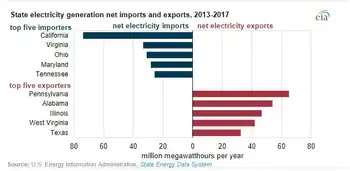Home crafts get wired
This is an environment that will always acknowledge you, but itÂ’s a cozy interactivity, the softer side of technology.
Ms. Lewis, 35, is part of a wave of young product designers intent on embedding electronics into “soft” areas like fashion or home furnishings. She has the can-do spirit that defines the modern crafter and hopes to engage other young women in her blinking, D.I.Y. world. Threading LEDs, she claims, is akin to knitting. (LED beads are like tiny glowing sequins; Ms. Lewis uses conductive thread to sew them onto fabric.) “I do it to relax,” she said.
Her work can involve some unlikely materials: perhaps a length of electroluminescent wire or yards of conductive fabric; the motor prized out of an electric toothbrush; a motion sensor.
Her thesis project for Parsons, from which she has a master’s degree in design and technology, was a pair of garments called Closer: one “sings” when you pat it, a twinkling, rolling melody composed by Ms. Lewis; the other sports an LED-embellished plastic heart — the more pats and hugs its wearer receives, the more colored lights ignite within its heart. “It’s about building tender moments and bringing people closer, which is my whole thing,” Ms. Lewis said.
Ms. Lewis has been spreading this high-tech, high-touch manifesto through her four-year-old blog, an electronic crafter’s how-to guide called Iheartswitch.com; her book, “Switch Craft: Battery-Powered Crafts to Make and Sew,” was published last year. There was a TV moment, hosting five episodes of a show on a local Fox Network affiliate last fall called “My Home 2.0,” in which she performed electronic domestic makeovers, the same sort of technological interventions she has practiced in her own apartment, which she shares with her boyfriend, Chris Arnold, a screenwriter and helicopter pilot she met through eHarmony.
Mr. Arnold, 34, is nearly as handy as Ms. Lewis: in his spare time, he makes latex weapons for film and theater sets. And he can solder wires with ease. “But I can’t solder a circuit board like Alison,” he said. “That’s real artistry.”
Ms. Lewis has an impeccable crafter’s pedigree. Her grandmother, Alice Merryman, who died two years ago at the age of 100, was a quilter and practitioner of corn shuckery, the art of weaving corn husks into brooms, baskets, benches and other objects, including dolls. A corn husk bench has pride of place in Ms. Lewis’s living room. “My grandmother made that for me when she was 96,” she said. “Alice was honest and spry and creative and she loved being in your business.”
Ms. Lewis spent summers in Clinton, Ark., with her grandmother, for whom she is named. But she grew up in Arlington, Tex.; her mother, a dietitian, taught Ms. Lewis to sew at age 4. “Mom is an expert seamstress, though extremely humble about her skill set,” Ms. Lewis said. “She acts like it’s no big deal. In her experience, sewing was just how you got clothes.”
Ms. Lewis sewed her own clothes, too, including a pair of blue pleather pants with black pockets she wore throughout the sixth grade. At Arizona State University, in the degree program for interior architecture, a professor advised Ms. Lewis to switch to the painting program, which she did. “I’m not sure if it was a compliment or an insult.”
When she graduated, she worked as a Web designer — “what do artists do to make money?” When the technology boom fizzled and she was laid off in 2000, she moved to New York and attended Parsons, where she taught for a few years after graduation. Nearly two years ago, she moved to Philadelphia to take a job building interactive exhibits for museums. When the job dried up last year — the economic crash hit museums hard — she decided to stay.
“We have 2,200 square feet and the rent is $1,500,” said Ms. Lewis. “We have a basement. I don’t think I could give that up.”
She led a visitor down to the basement workroom that holds her extensive batterie de cuisine. There was soldering equipment; boxes of routers and power cords; hanks of stranded wire; yards of Luminex fabric (a glowing, fiber-optic textile); packages of tiny portable speakers.
“I’m always trying to figure out what’s the best one to hack apart, so I buy everything,” she explained.
There were motion sensors and stacks of conductive fabric — literally, fabric woven with conductive material like wire. Her sources include Michael’s, the crafting supply store, Radio Shack and Build-a-Bear Workshop, which sells sound devices — tiny objects which, when pressed, emit sounds like a frog croaking or chicken clucking. They are meant to go into children’s toys but Ms. Lewis embeds them in chew toys for pets. (She also hacks sounds from other sources: she extracted the sound device from a dollar-store chick and sewed it into a toy for Mojo, her 9-month-old Pomeranian.)
Ms. Lewis, who once worked for DuPont creating prototypes like a WiFi-detecting scarf, is developing products under her Switch brand. A flexible pocket of zebra-patterned silk holds six bud vases made from test tubes and a volume meter. When it detects sound — Ms. Lewis demonstrated by singing softly — the vases light up. She’s proudest of a squashy pale blue felt rectangle with a bright red canvas pompom she calls Pillow Talk. It’s made to be hooked up to an iPhone, which turns the whole pillow into a phone.
A visitor, sitting upright, held it up to her ear. Ms. Lewis rolled her eyes. “No, no, you’re supposed to lie down and cuddle with it.” She curled up on the couch and tucked the pillow under her head. “C’mon, Target, hire me!”
Related News

Germany turns to coal for a third of its electricity
BERLIN - Germany is relying on highly-polluting coal for almost a third of its electricity, as the impact of government policies and the war in Ukraine leads producers in Europe’s largest economy to use less gas and nuclear energy.
In the first six months of the year, Germany generated 82.6 kWh of electricity from coal, up 17 per cent from the same period last year, according to data from Destatis, the national statistics office, published on Wednesday. The leap means almost one-third of German electricity generation now comes from coal-fired plants, up from 27 per cent last year. Production from natural…




